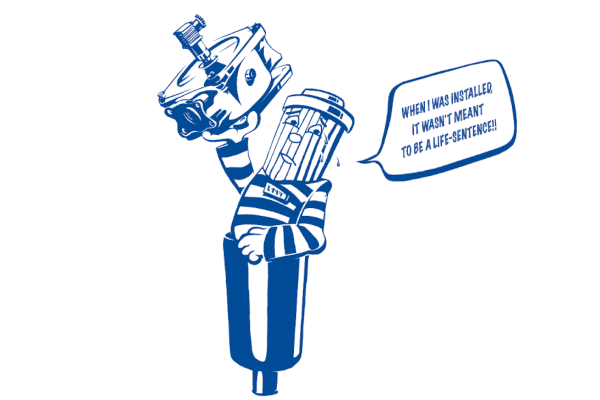
The hydraulic system is an expensive piece of machinery and for this reason final users rely on its trouble-free performance in the long run.
Regular maintenance is therefore essential to achieve efficiency and productivity.
80% of all hydraulic system failures are said to originate from contamination, therefore regular filter element change should be an essential part of your desired maintenance regime.
How often should be changed the filter element?
Knowing when your filter element needs to be changed is essential. If you change it after a set number of hours, you may be changing it too early or too late.
Changing early, before the dirt-holding capacity in the filter has been exhausted you are potentially wasting money on unnecessary change-outs.
On the other hand, if you wait too long, and the filter element is clogged, it may already be operating on by-pass.
Contaminated oil by-passing the filter element is adding to the service life reduction of every component in the hydraulic system.
The importance of getting the timing right
The best time to change your filter element is just before it reaches its maximum dirt-holding capacity (DHC) – this corresponds to the maximum amount of particulate contamination the filter media is capable of holding.
The most economic change-out time for your filter element requires a mechanism to monitor the pressure of the hydraulic oil flowing through the filter, and one which will alert you when this flow starts to diminish.
This is the most likely indication that the filter element contains excessive particulate contamination.

A visual clogging indicator is the simplest and cheapest form of alert, however unless regularly inspected, not the most reliable of methods.
A better solution is to install an electrical clogging indicator with a voltage-free signal to a monitoring station for more accurate control. It is important to note that both methods must be set to trigger a signal at a pressure lower than the setting of the by-pass valve.
On return- and low-pressure filters, the clogging indicator can be a pressure gauge or a pressure switch. Both devices measuring the pressure upstream of the filter.
On some return filters and on high-pressure filters, the clogging indicator can be of a differential type: measuring the pressure upstream and downstream of the filter and activating a signal when the differential pressure reaches the set value.
On suction filters, the clogging indicator is a vacuum gauge or a vacuum switch, which measures the de-pressurisation downstream of the filter.
All UFI Hydraulics filters are equipped with the necessary connection points to take whatever clogging indicator is preferred. A retrospective assembly of a clogging indicator to a filter, supplied as standard with a blanking plug, is possible at any time. Simply remove the plug and fit the desired indicator.
Don’t compromise hydraulic-system performance for the price of an element change
Ignoring this essential change-out requirement, or not fitting an indicator and forgetting the fact you have a filter, is a false economy and could cost you far more in downtime and expensive hydraulic component repair and/or replacement.
Should you need any further information or support for the selection of the best clogging indicator for your application, please contact our Sales Team.